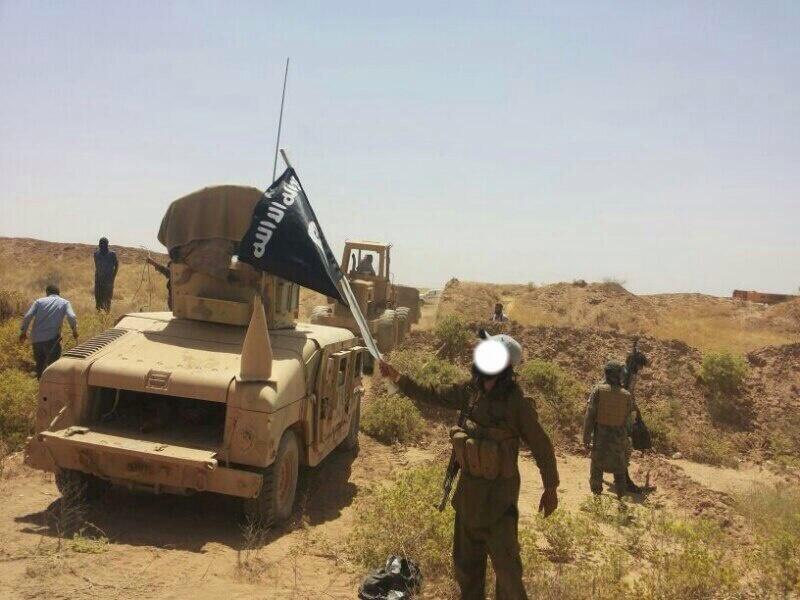Trepidaciously Awaiting Disaster
"[The solution was near-continual grouting] just to keep the seepage constant, not stop it."
"Almost every day I get tens of emails from people who are friends and even people I don't know asking me where should we go, what should we do?"
"There are only two bottom outlet gates. One of them is stuck, jammed since 2013. If one of the gates is closed, the other one cannot discharge that much water alone."
Professor Nathir Al-Ansari, construction consultant, water resources engineering expert
"[I] wouldn't be surprised if it [the dam] goes."
"These guys [government of Iraq] are just corrupt and incompetent and they stick their heads in the sand."
Florian Neuhof, freelance journalist, Iraqi Kurdistan
 |
| File photo of Mosul Dam from November 2007 showing the dam on the Tigris River, around 50km north of Mosul, northern Iraq. EPA |
 |
| ISIL fighters with U.S.Humvees - Twitter |
Not only did ISIL pick up valuable supplies and weapons of war they have used to their advantage, but they looted the Mosul bank of over $400-million to further enrich themselves. Mosul remains in the hands of the Islamic State, as part of its infamous caliphate. ISIL also moved to take control of the Mosul Dam, and there were fears that water would be cut off to Baghdad, or that the jihadis would seek to destroy the dam. And it seems they did, by default, do just that.
When the dam was built thirty years ago in 1984 in the country's north a few miles from Mosul, its construction was fraught with problems caused by inappropriate engineering and a poor foundation geologically. There was, from the very start, a problem with water seeping from the dam, leaking incessantly, and as water is wont to do, destabilizing the dam's foundation. The slipshod construction and that the Mosul Dam was built on a gypsum foundation a soft mineral that dissolves in water, has left the dam in critical shape.
Since it was built, it has been on a 24-hour 'maintenance' schedule whereby a cement slurry is pumped constantly into boreholes under pressure, as a kind of grouting to fill cavities created by the constantly leaking water. About 96,000 tons of grouting (cement) has been poured into the dam over the years, enabling it to do what it was constructed for. It worked until ISIL routed the Iraqi military from the dam, too. The maintenance workers ran for their lives and the regular maintenance became history.
Months later the dam was retaken by Kurdish and Iraqi forces and new maintenance staff brought in to resume the 'grouting'. But there are fears that the structural integrity of the dam is now beyond simple repair, even though an Italian company has been brought in to undertake the urgency of maintenance of the structure, scheduled imminently to begin their work. A military presence is required at the dam to ensure that security is constant and reliable. Still, the fear is that the dam is too unstable to last.
In early February the Iraqi Ministry of Water Resources Management issued a statement where the agency head described the Mosul Dam's condition as "good". This, despite the dam's potential for imminent collapse. A situation well known by now to those living in the area. And if the Mosul Dam, now thought by global experts to represent one of the most dangerous dams in the world, does collapse it would be horribly consequential.
Estimates are that the dam collapse would result in catastrophic loss of live, placing the total of the death toll at possibly 500,000 people.Apart from the leakage problem, and the most recent history of its neglect, spring rains, melting snow caps and the rising level of the Tigris River and its tributaries may conceivably all lead to what a combination of nature's forces and the unreliability of the dam's construction auger.
Labels: Conflict, Infrastructure, Iraq, Islamic State

<< Home